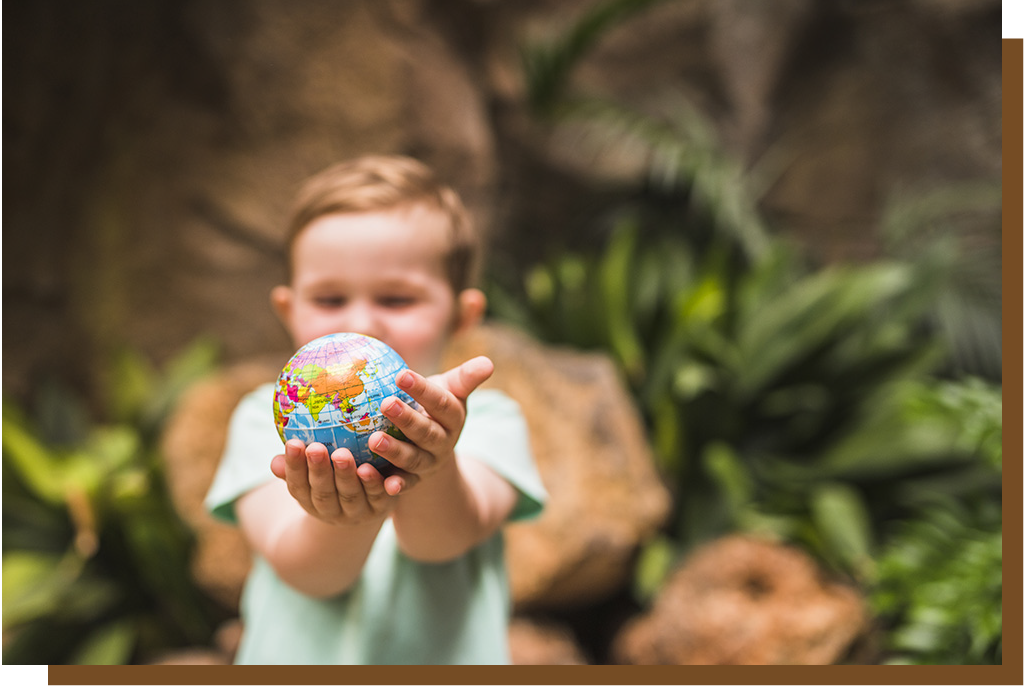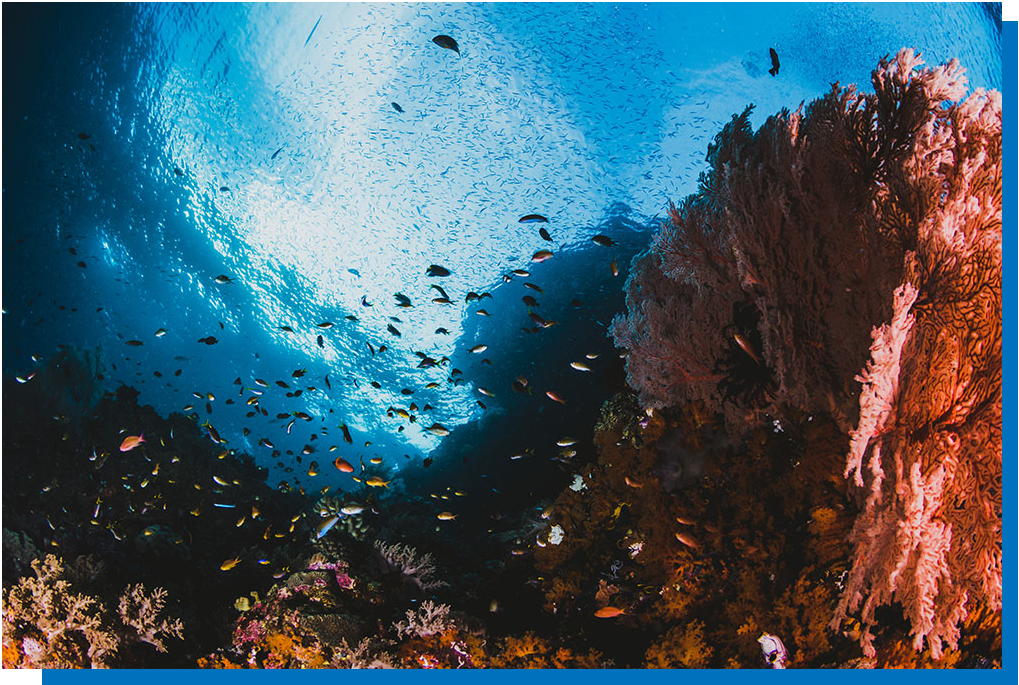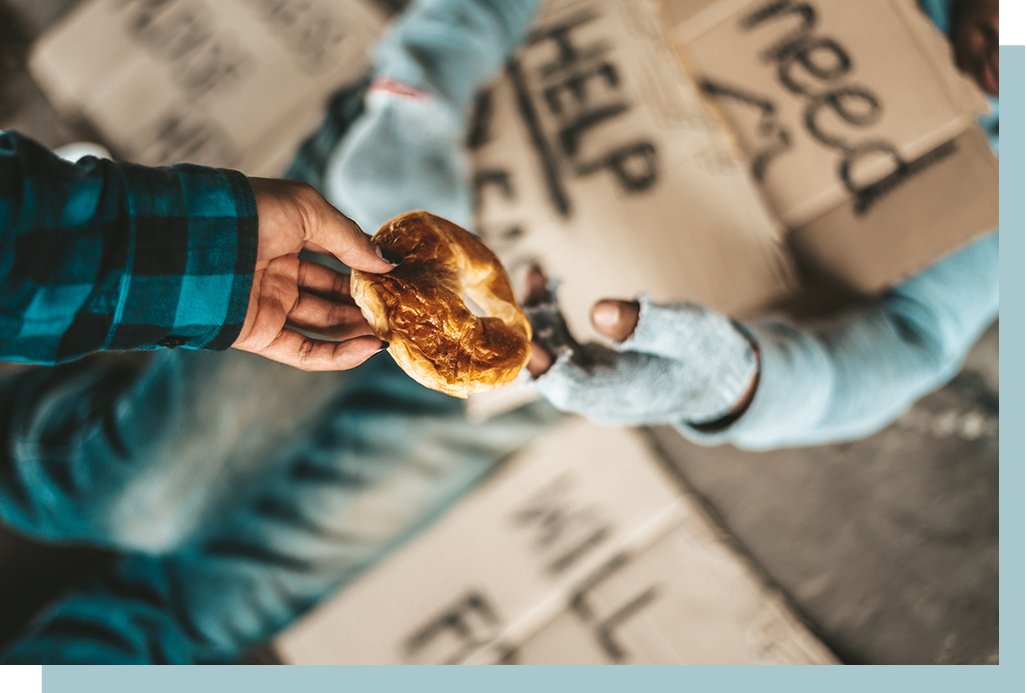In questa sezione scoprirai come la dieta può avere un impatto non soltanto sulla tua salute ma anche su quella del pianeta stesso.
La Terra
Il futuro di tutti noi e delle nuove generazioni è in pericolo perché il nostro pianeta è a rischio di collasso.
Negli anni, l’uomo ha sfruttato ogni risorsa della terra in un modo così estremo da non essere più sostenibile.
La maggior parte della distruzione ambientale, ad ogni livello, è dovuta agli allevamenti intensivi.
Nel 2006 è stato pubblicato un rapporto della FAO (L’Organizzazione delle Nazioni Unite che si occupa di Cibo e Agricoltura) intitolato “L’ombra lunga del bestiame: impatto ambientale e opzioni” ( Livestock’s Long Shadow: Environmental Issues and Options).
Questo documento afferma che gli allevamenti di bestiame hanno un grande impatto sui cambiamenti climatici che affliggono il nostro pianeta.

La creazione di nuovi pascoli è la causa primaria della deforestazione. Il 70% della foresta amazzonica, che rappresenta “il polmone” della terra, è stato distrutto per creare spazio per gli allevamenti intensivi e per la coltivazione di soia, mais ed erba medica per nutrire questi animali.
I fertilizzati, i pesticidi, i diserbanti usati in modo indiscriminato per favorire le colture, dopo alcuni anni, causano la morte del suolo, e oggi molti terreni sono inutilizzabili, perché non vi cresce più nulla.
I gas serra (anidride carbonica, protossido di azoto, metano ed esafluoruro di zolfo)intrappolano la luce solare e sono i responsabili del surriscaldamento della terra e dei cambiamenti climatici.
Secondo la FAO, agli allevamenti intensivi producono più emissioni di gas serra di quanto non facciano tutti i mezzi di trasporto messi insieme (auto, treni, navi, aeri ecc.)
Il 18% delle emissioni di anidride carbonica è dovuto agli allevamenti industriali e il 14% è dovuto ai trasporti.
Produrre 1 kg di manzo equivale a produrre 36,4 Kg di anidride carbonica, la stessa che verrebbe prodotta da un automobilista medio che percorre 250 km.
Gli allevamenti producono anche altri gas tossici come il monossido di azoto, il metano e l’ammoniaca. Il monossido di azoto ha un potenziale di surriscaldamento globale 296 volte superiore a quello dell’anidride carbonica, il metano 23 volte.
L’ammoniaca contribuisce alla piogge acide e all’acidificazione dell’ecosistema
Sempre più spesso i fiumi nel mondo, sono asciutti perché vengono deviati dal loro corso naturale per irrigare i campi destinati agli allevamenti. E questo causa l’aumento della desertificazione e la distruzione di molti ecosistemi.
Un altro enorme impatto della produzione di carne, è il consumo di acqua: Per produrre 1 kg di manzo occorrono 15.500 litri di acqua
Per 1 Kg di maiale occorrono 4900 litri di acqua.
Per 1 Kg di pollo occorrono 3900 litri di acqua.
Per 1 kg di riso occorrono 3000 litri di acqua.
Per 1 kg di mais occorrono 900 litri di acqua.
Si risparmia più acqua non mangiando 1 Kg di manzo che non facendo la doccia per 12 mesi interi!
Le sostanze chimiche che vengono impiegate per la coltivazione, con le piogge, finiscono nei corsi d’acqua e poi nei mari. I fertilizzanti in modo particolare, causano una crescita eccezionale di alghe che determinano una riduzione dell’ossigeno nell’acqua. In questo modo le altre forme di vita non possono sopravvivere. Le aree colpite da questo fenomeno vengono chiamate “zone morte”.
Complessivamente negli oceani, abbiamo circa 152.887 km2 di zone morte, completamente prive di vita.
Gli Oceani
Gli oceani ricoprono il 71% della superficie terrestre e forniscono l’ossigeno di cui abbiamo bisogno. Se dovessero morire, anche noi moriremmo.
A causa dell’effetto combinato di cambiamento climatico, eccessivo sfruttamento, inquinamento e distruzione degli habitat, potremmo presto scoprire che la vita in essi è solo un ricordo.
Dal 1950 a oggi, la pesca è aumentata di 5 volte, mentre il pesce si è ridotto della metà.
¾ delle risorse di pesce del mondo sono già sfruttate o esaurite, e di questo passo entro il 2048 vedremo il mare senza pesci.

Per 1 kg di pesce pescato intenzionalmente, 5 kg vengono presi accidentalmente e muoiono. La pesca con il palangaro nel Pacifico (una filo che può raggiungere i 100 km di lunghezza a cui sono attaccate diramazioni con le esche) causa l’uccisione accidentale di 4.4 milioni di pesci, inclusi:
3.3 milioni di squali
1 milione di marlin
77.000 albatros
59.000 tartarughe marine
20.000 balene e delfini.
La pesca al traino dei gamberi, produce danni paragonabili alla distruzione della foresta vergine.
Essa causa tra l’80 e il 90% delle catture accidentali
La pesca commerciale causa ogni anno la morte accidentale di 650.000 mammiferi marini, tra cui balene, delfini, e foche.
73 milioni di squali vengono uccisi ogni anno per il commercio delle loro pinne, e 40-50 milioni sono uccisi accidentalmente
La perdita dei grandi predatori permette a molte specie che si nutrono delle piante marine, di crescere senza alcun impedimento, causando uno sconvolgimento dell’intero ecosistema.
La perdita di solo l’ 1% degli ecosistemi marini ricchi di carbonio, equivale a rilasciare nell’aria 460 milioni di tonnellate di carbonio ogni anno, che è l’equivalente delle emissioni dei gas serra annuale dell’Australia.
Gli allevamenti marini potrebbero sembrare la soluzione dei problemi causati dalla pesca commerciale, ma purtroppo non è così.
Da quando questa pratica è stata introdotta nel 1950, il numero di pesci selvatici catturati è aumentato drammaticamente, perché i pesci allevati sono carnivori e devono essere nutriti con il pesce pescato.
Questi allevamenti inoltre, contribuiscono a distruggere gli habitat, perché inquinano l’acqua con lo smaltimento dei rifiuti e diffondono parassiti letali per le specie marine selvatiche.
La fame nel mondo
Ogni 3.6 secondi una persona muore di fame e il 75% di esse sono bambini.
Questa tragedia potrebbe essere fermata facendo un uso migliore dei terreni e delle coltivazioni, diversificandole e destinandole ad uso umano anziché ad uso esclusivamente animale.
Oggi l’80% dell’agricoltura mondiale è usata per nutrire il bestiame e la maggior parte del pescato è destinato a nutrire gli animali che mangiamo (polli, maiali, mucche, pesci e gamberi di allevamento).

Risorse
[1] Fao.org. Spotlight: Livestock impacts on the environment. [Original Link no longer active. Similar post active here]
[2] Environmental Protection Agency. “Global Emissions.”
[3]Good land, R Anhang, J. “Livestock and Climate Change: What if the key actors in climate change were pigs, chickens and cows?” WorldWatch, November/December 2009. Worldwatch Institute, Washington, DC, USA. Pp. 10–19.
[4] Improved Attribution of Climate Forcing to Emissions by Drew T. Shindell*, Greg Faluvegi, Dorothy M. Koch, Gavin A. Schmidt, Nadine Unger, Susanne E. Bauer
[6] Dr. Kirk R. Smith, MPH, PhD, Professor of Global Environmental Health at UC Berkley, as quoted in Cowspiracydocumentary
[7] Intergovernmental Panel on Climate Change. “Climate Change 2013: The Physical Science Basis.” Working Group I.
[8] “LIVESTOCK’S LONG SHADOW: environmental issues and options.” FOOD AND AGRICULTURE ORGANIZATION OF THE UNITED NATIONS Rome, 2006
Mario Herreroa,b,1, Petr Havlíkb,c, Hugo Valinc, An Notenbaertb, Mariana C. Rufinob, Philip K. Thorntond, Michael Blümmelb, Franz Weissc, Delia Graceb, and Michael Obersteinerc
[10] Thornton, Phillip, Mario Herrero, and Polly Ericksen. “Livestock and Climate Change.” Livestock Exchange, no. 3 (2011).
[11] Oppenlander, Richard A. Food Choice and Sustainability: Why Buying Local, Eating Less Meat, and Taking Baby Steps Won’t Work. . Minneapolis, MN : Langdon Street, 2013. Print.
[12] World Bank. “Causes of Deforestation of the Brazilian Amazon“
[13] “Avoiding Unsustainable Rainforest Wood.” Rainforest Relief.
[14] Facts about the rainforest from SavetheRainforest.org
[15] 2,500 Gallons All Wet by John Robbins, also in his book “Diet for a New America”
[16] How Our Food Choices can Help Save the Environment by Steve Boyan, PhD
[17] Average Annual Emissions & Fuel Consumption for Gasoline-Fueled Passenger Cars and Light Trucks by the EPA
[18] Comfortably Unaware by Richard Oppenheimer
[19] The Encyclopedia of Earth, “The Causes of Extinction“.
[20] NOAA, “What is a dead zone“.
[21] Scientific America, “What Causes Ocean “Dead Zones“?”.
[22] “What’s the Problem?” United States Environmental Protection Agency.
[23]The Encyclopedia of Earth, “The Causes of Extinction“.
[24] Annenberg Learner, Unit 9: Biodiversity Decline // Section 7: Habitat Loss: Causes and Consequences
[25] WWF, “Losing their homes because of the growing needs of humans.“
[26] Center for Biological Diversity, “How Eating Meat Hurts Wildlife and the Planet“.
[27] “Fire Up the Grill for a Mouthwatering Red, White, and Green July 4th.” Worldwatch Institute.
[28] Oppenlander, Richard A. “Biodiversity and Food Choice: A Clarification.” Comfortably Unaware. 2012
[29] “Risk Assessment Evaluation for Concentrated Animal Feeding Operations.” U.S. Environmental Protection Agency – Office of Research and Development. 2004.
[30] Osterman, L.E., Poore, R.Z., Swarzenski, P.W., 2008, Gulf of Mexico dead zone–1000 year record: U.S. Geological Survey Open-File Report 2008-1099,
[31] Water Sense by the EPA
[32] Oxford Journals. “Water Resources: Agricultural and Environmental Issues“
[33] The World’s Water. “Water Content of Things“
[34] Journal of Animal Science. “Estimation of the water requirement for beef production in the United States.“
[35] “Meateater’s Guide to Climate Change & Health.” Environmental Working Group.
[36] “Water Footprint Assessment.” University of Twente, the Netherlands.
[37] Water Footprint Network, “Product Water Footprints“.
[38] Jacobson, Michael F. “More and Cleaner Water.” In Six Arguments for a Greener Diet: How a More Plant-based Diet Could save Your Health and the Environment. Washington, DC: Center for Science in the Public Interest, 2006.
[39] A Global Assessment of the Water Footprint of Farm Animal Products by Mesfin M. Mekonnen* and Arjen Y. Hoekstra [states 1/5 of global water]
[40] The water footprint of poultry, pork and beef: A comparative study in different countries and production systemsby P.W. Gerbens-Leenes, , M.M. Mekonnen , A.Y. Hoekstra [States 27%-30%+ of global water consummation is for animal agriculture]
[41] Biomass use, production, feed efficiencies, and greenhouse gas emissions from global livestock systems by Mario Herreroa,b,1, Petr Havlíkb,c, Hugo Valinc, An Notenbaertb, Mariana C. Rufinob, Philip K. Thorntond, Michael Blümmelb, Franz Weissc, Delia Graceb, and Michael Obersteinerc [States 1/3 of global fresh water consumed is for animal ag.]
[42] “Freshwater Abuse and Loss: Where Is It All Going?” Forks Over Knives.
[43] It Takes HOW Much Water to Make Greek Yogurt?! Dairy products require a whole lot of water—and many of them come from drought-ridden California. By Julia Lurie and Alex Park in Mother Jones but with academic citations
[44] “Draft Plan to Study the Potential Impacts of Hydraulic Fracturing on Drinking Water Resources.” EPA Office of Research and Development. United States Environmental Protection Agency, 2011.
[45] Pimentel, David, et al. “Water Resources: Agricultural And Environmental Issues.” BioScience 54, no. 10 (2004): 909-18.
[46] Barber, N.L., “Summary of estimated water use in the United States in 2005: U.S. Geological Survey Fact Sheet 2009–3098.”
[47] “Overfishing: A Threat to Marine Biodiversity.” UN News Center.
[48] “General Situation of World Fish Stocks.” United Nations Food and Agriculture Organization (FAO).
[49] Science, “Impacts of Biodiversity Loss on Ocean Ecosystem Services“.
[50] “World Review of Fisheries and Aquaculture.” UNITED NATIONS FOOD AND AGRICULTURE ORGANIZATION (FAO). 2012.
[51] “Discards and Bycatch in Shrimp Trawl Fisheries.” UNITED NATIONS FOOD AND AGRICULTURE ORGANIZATION (FAO).
[52] Infographic: How Much it Would Cost for the Entire Planet to Switch to Renewable Energy by Elliot Chang
[53] The Cost of Going Green Globally by Anne Perkins
[54] “Measuring the daily destruction of the world’s rainforests.” Scientific American, 2009.
[55] “Dietary greenhouse gas emissions of meat-eaters, fish-eaters, vegetarians and vegans in the UK.” Climactic change, 2014.
[56] Press Release, Climate Summit 2014.
[57] Vaclav Smil, Harvesting the Biosphere: The Human Impact, Population and Development Review 37(4): 613-36, December 2011. The proportions are of mass measures in dry weight.
[58] Dr. Will Tuttle as quoted in the Cowspiracy documentary
[59] CO2: “The Carbon Footprint of 5 Diets Compared.” Shrink The Footprint.
[60] Oil, water: “Sustainability of meat-based and plant-based diets and the environment.”
The American Journal of Clinical Nutrition, 2003.
[61] One Green Planet, “Meat The Truth“.
[62] Robbins, John. “Food Revolution“. Conari Press, 2001 [Quoted Here]
[63] “Our food our future.” Earthsave.
[64] Oceana Living Blue Suggestions
[65] PRESS RELEASE LOUISIANA UNIVERSITIES MARINE CONSORTIUM, August 4, 2014
[66] “How To Manage Manure.” Healthy Landscapes.
[67]“FY-2005 Annual Report Manure and Byproduct Utilization National Program 206.”
USDA Agricultural Research Service. 2008.
[68] “UN launches international year of deserts and desertification.” UN news centre, 2006.
[69] UWC, “Desertification“.
[70] The Encyclopedia of Earth, “Overgrazing“.
[72] Free From Harm article that explains desertification and livestock’s role
[73] “Costs and Consequences: The Real Price of Livestock Grazing on America’s Public Lands” the Center for Biological Diversity
[74] U.S. extrapolated data from EPA, Land Uses.
[75] Versterby, Marlow; Krupa, Kenneth. “Major uses of land in the United States.” Updated 2012. USDA Economic Research Service.
[76] USDA, Major Uses of Land in the United States, 1997.
[77] “Rearing cattle produces more greenhouse gases than driving cars, UN report warns.” UN News Centre, 2006.
[78] Niles Eldredge, “The Sixth Extinction“
[79] Mass extinction of species has begun. Referencing speech by environmentalist Professor Norman Myers
[80] Direct Seeded Vegetable Crops, Johnny Seeds.
[81] USDA NASS, “One Acre of Washington’s farmers land“
[82] Iowa State University Animal Industry Report 2012.
[83] “Diet for a New America” by John Robbins
[84] “Our food our future.” Earthsave.
[86] “Soy Benefits”. National Soybean Research Laboratory.
[87] “Rainforest statistics and facts.” Save the amazon.
[88] Monga Bay, “What is Deforestation?“
[89] “Amazon Destruction.” Monga Bay.
[90] 214,000 square miles occupied by cattle (136 million acres)
[91] Rainforest facts.
[92] World Resources Institute, “Keeping Options Alive.”
[94] How Cows Kill Rainforests: The Flip-Side of an All-Beef Patty
[95] Cowspiracy the documentary

